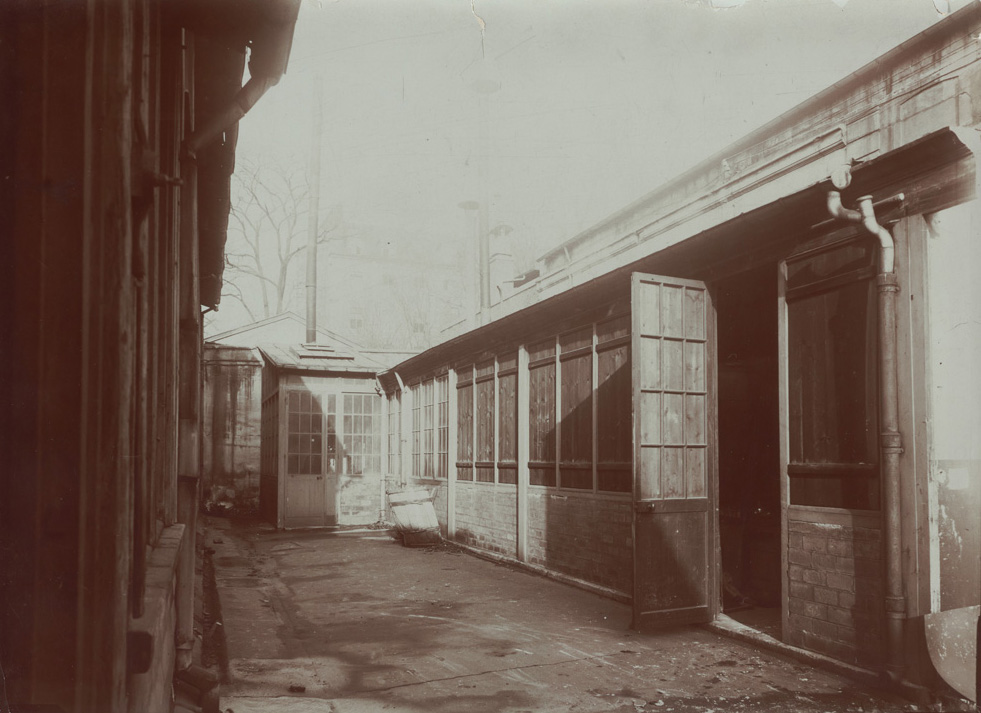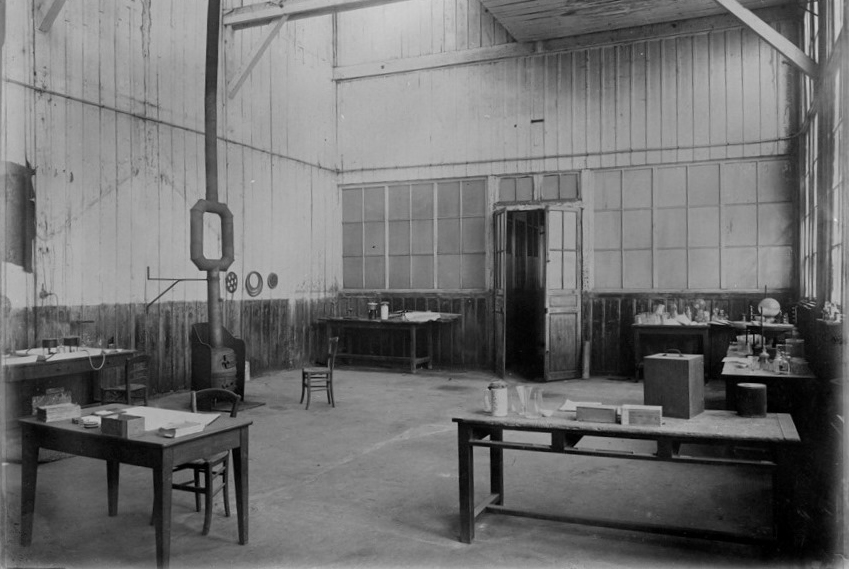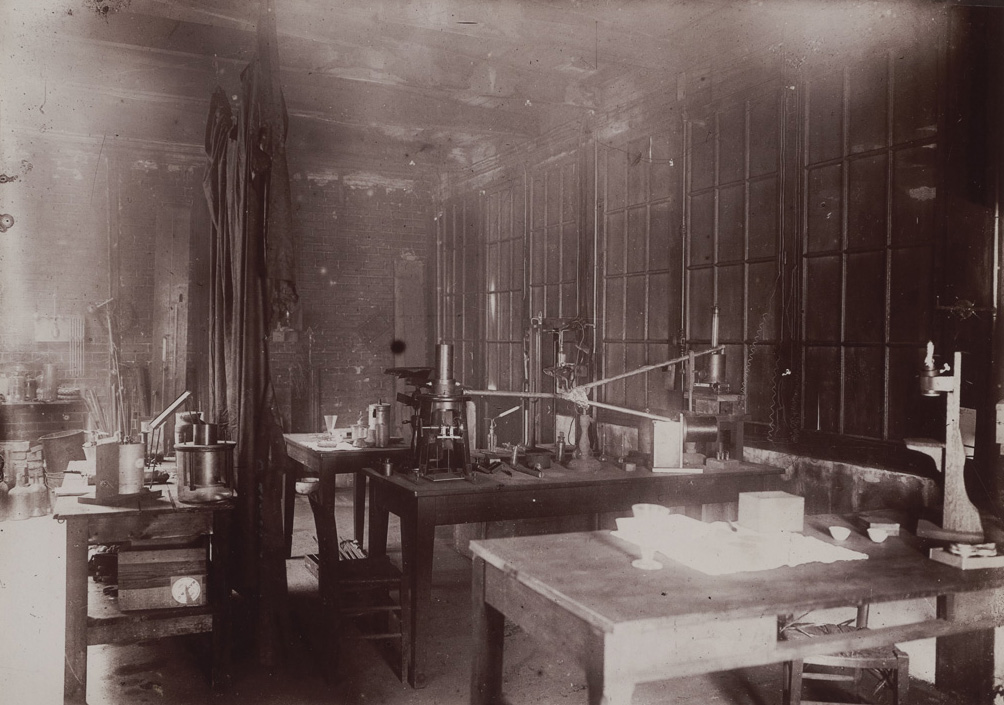
The director initially authorized her to use a glass-enclosed workshop on the ground floor that was being used as a store room and machine room. It was here that they set up their Curie method device to measure radioactivity.
Later, Marie and Pierre Curie would need a space for their chemical processing, and especially radium extraction. Marie Curie wrote: The question of quarters was particularly serious; we did not know where we could conduct our chemical treatments. We had been obliged to start them in an abandoned storeroom across a court from the workroom where we had our electrometric installation. This was a wooden shed with a bituminous floor and a glass roof which did not keep the rain out, and without any interior arrangements. The only objects it contained were some worn pine tables, a cast-iron stove, which worked badly, and the blackboard which Pierre Curie loved to use. There were no hoods to carry away the poisonous gases thrown off in our chemical treatments, so that it was necessary to carry them on outside in the court, but when the weather was unfavorable we went on with them inside, leaving the windows open.1
Both the hangar and the glass-enclosed workshop used by the Curies were razed during the years between the two world wars. In addition to Marie Curie’s descriptions, we have a few photographs of the site. These photos were probably taken around 1903, when Marie and Pierre Curie received the Nobel Prize in Physics, to be published in newspapers.
1Marie Curie, Pierre Curie, 1924



















